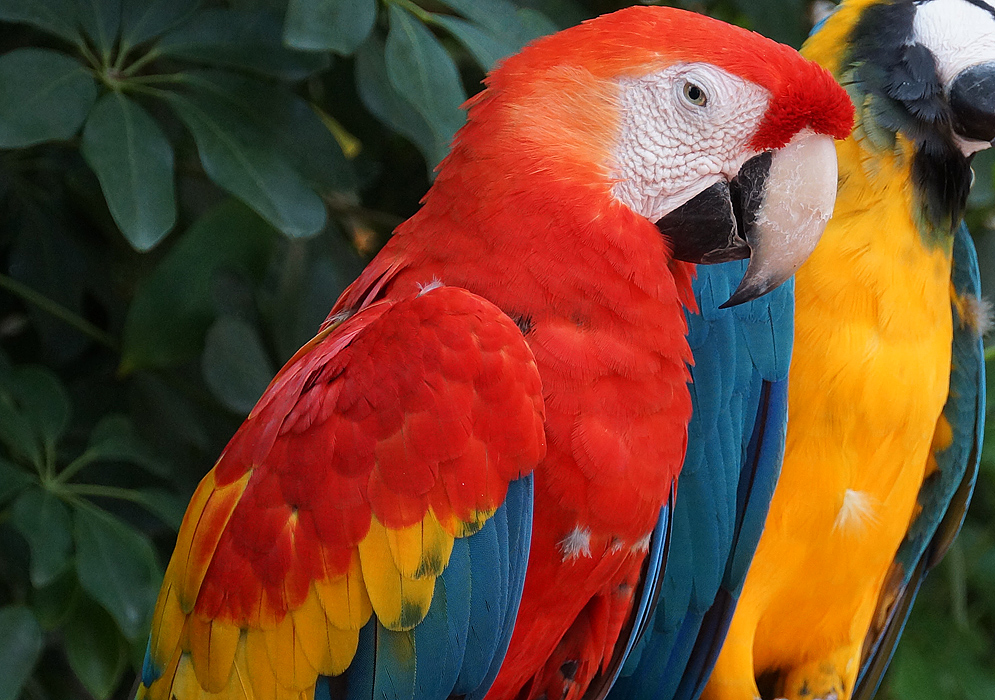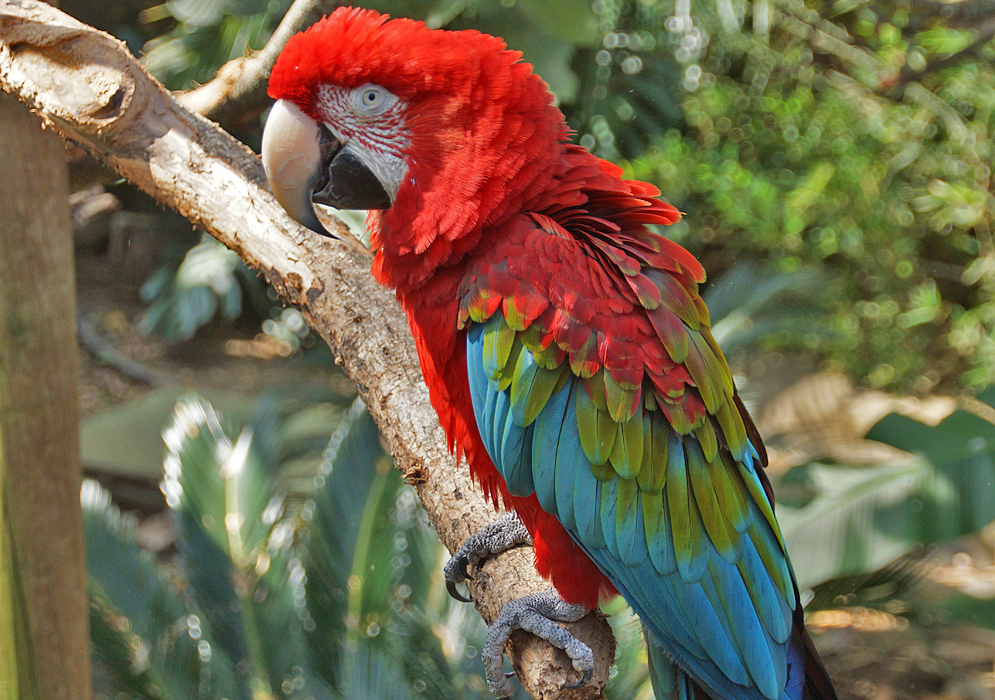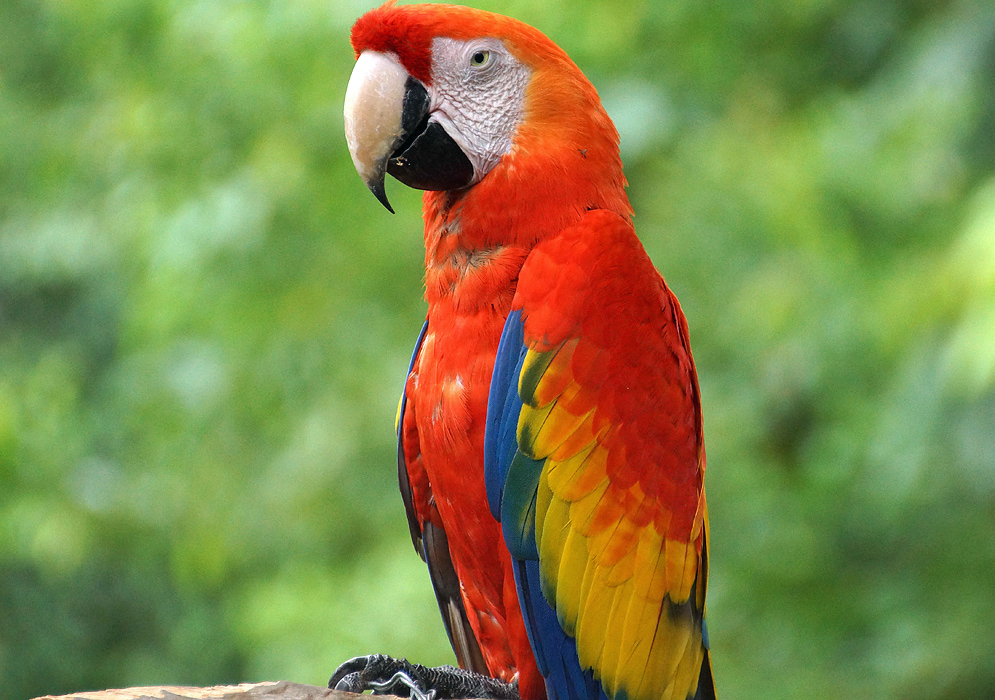This post has 11 Simple Fields-fields attached. Show fields.

The Scarlet Macaw is a vibrant parrot native to the humid evergreen forests of the Americas. It resides from southeastern Mexico through Central America to South America, including Brazil, Peru, Ecuador, Colombia, Bolivia, Venezuela, and on the Caribbean island of Trinidad, as well as Coiba on the Pacific side. Habitats range from lowlands up to about 3,300 feet in altitude, within subtropical and tropical dry and moist forests, mangroves, and even in savanna-like areas. This bird is recognizable by its striking red, yellow, and blue plumage. It is a substantial bird, roughly 32 inches long, with more than half of its length attributed to its pointed, graduated tail. The scarlet macaw's average weight is around 2 pounds and 3 ounces. They feature a light blue rump and tail-coverts, yellow upper wing coverts, and dark blue upper sides of the flight feathers on the wings and tail ends. Notably, the underside of their wing and tail feathers exhibit a dark red color with a metallic gold iridescence. There are two subspecies of the scarlet macaw, distinguished by size and coloration details on the wing feathers: Ara macao macao, the South American scarlet macaw, which has green-tipped wing feathers, and A. m. cyanopterus, the North Central American scarlet macaw, which is larger and has blue in its wings instead of green. The scarlet macaw is categorized as 'Least Concern' by the IUCN Red List. The global population is suspected to be between 50,000 and 500,00 mature individuals with a decreasing trend. The decline in population, estimated at 10-19% over three generations, is primarily due to habitat loss and trapping for the pet trade. Tree cover within their range has diminished by 9% over three generations, but due to the species' tolerance for open habitats, this loss does not directly equate to similar rates of population decline. Nevertheless, the impact of trapping is significant, given the bird's popularity in aviculture and as pets. It has also been introduced to Puerto Rico. It is the national bird of Honduras.





